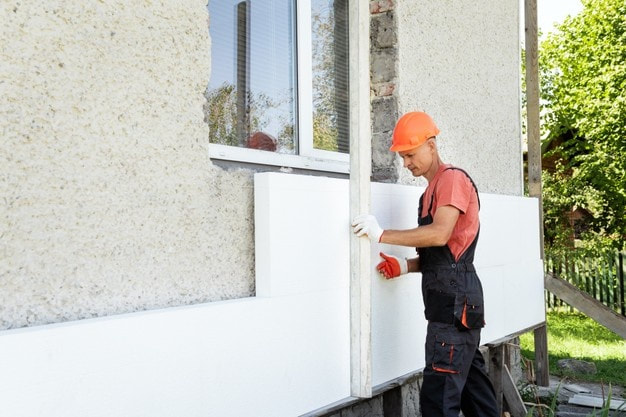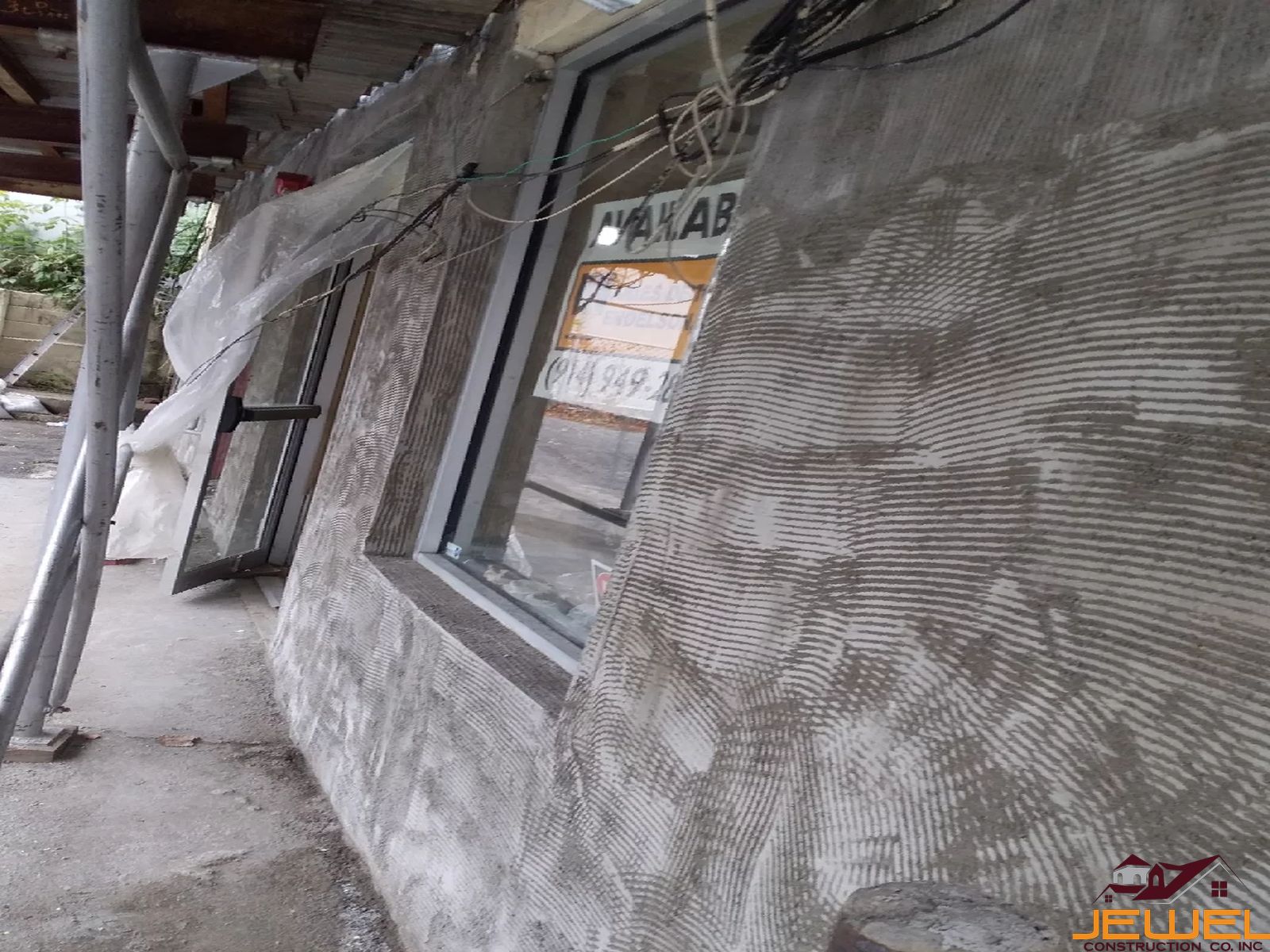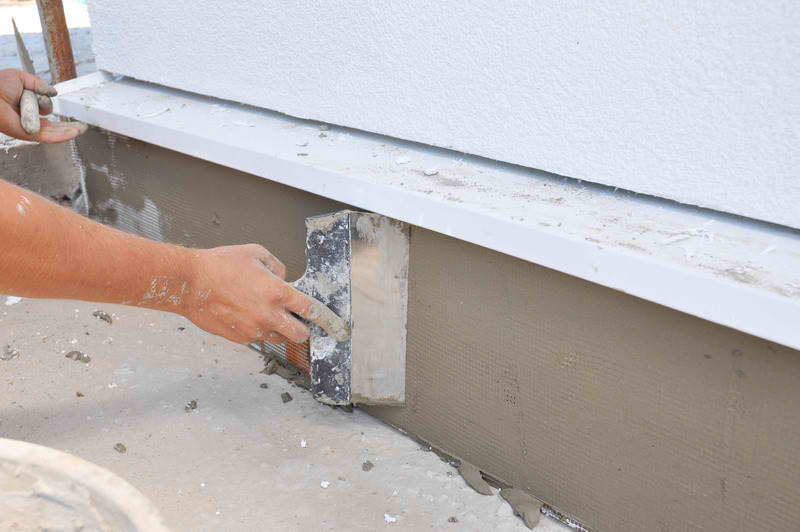Checking Out the Adaptability of Stucco in Modern Style
Stucco has long been recognized for its visual charm and adaptability, yet its duty in modern style warrants a more detailed assessment. By exploring its innovative applications, from striking exteriors to energy-efficient designs, one can appreciate exactly how stucco is redefining the limits of architectural expression.
Historic Significance of Stucco
The historical importance of stucco is profound, as it has played a crucial role in architectural practices across different cultures for centuries. Coming from ancient civilizations, stucco was made use of by the Egyptians and Greeks as a resilient and functional finish for both exterior and interior surface areas. Its adaptability to various environments and capability to resemble extra costly materials made it a favored option.
In the Roman period, stucco came to be a primary ornamental aspect, utilized thoroughly in public buildings, villas, and temples. The Romans improved the application methods, permitting for elaborate layouts and alleviation sculptures. Throughout the Renaissance, stucco experienced a rebirth, particularly in Italy, where it was used in elaborate exteriors and ornamental information, showcasing the creativity of the period.

Modern Applications in Style
Stucco has discovered renewed importance in modern-day style because of its versatility and aesthetic allure (stucco contractor). This typical product is progressively utilized in contemporary design, bridging the void in between contemporary and timeless appearances. Designers and designers appreciate stucco for its adaptability, allowing it to be used in different designs-- from minimal frameworks to elaborate Mediterranean designs
In domestic projects, stucco supplies a clean, smooth finish that improves the aesthetic communication of exteriors. Its capability to adapt various forms and surfaces makes it a suitable choice for both brand-new buildings and restoration jobs. Additionally, stucco's toughness and low maintenance needs add to its expanding appeal in metropolitan setups, where lasting products are important.
Industrial applications have also accepted stucco, with many organizations opting for this material to create inviting and distinct store fronts. Using stucco in public buildings, such as institutions and community centers, showcases its capacity for creating aesthetically attractive settings while offering superb insulation homes.
Color and Structure Innovations
Exploring shade and appearance innovations in stucco has actually opened brand-new avenues for engineers and designers, boosting the material's aesthetic influence in modern building. Current developments in pigment technology have actually permitted a larger range of colors, enabling developers to develop striking facades that integrate perfectly with their surroundings or attract attention as strong architectural statements. This versatility in color selection supplies architects the ability to evoke specific emotional reactions and harmonize with local aesthetics.
Appearance innovations have in a similar way changed stucco applications. Strategies such as troweling, spraying, and stamping have actually resulted in varied surface finishes, ranging from smooth and fine-tuned to rugged and tactile. These variants not only add to the building's character yet additionally play an essential duty in light interaction, boosting the aesthetic deepness and dimensionality of surface areas.
Additionally, the intro of synthetic stucco alternatives has increased design possibilities, supplying boosted sturdiness and weather resistance while keeping visual appeal. As architects proceed to trying out ingenious color combinations and textured surfaces, stucco continues to be a critical element in modern-day style, showcasing the material's versatility and useful site ageless significance in contemporary layout.
Sustainability and Energy Performance
Developments in color and structure have not just enhanced the visual linked here allure of stucco but additionally paved the method for better emphasis on sustainability and power performance in modern-day style. As ecological worries come to be progressively prominent, the building and construction market is turning its interest to products that add favorably to eco-friendly equilibrium.
Stucco, made up primarily of all-natural products such as cement, sand, and lime, supplies a sustainable option to even more resource-intensive structure products. Its longevity and longevity decrease the demand for regular substitutes, thereby reducing waste and source intake with time. Modern-day stucco formulations usually include energy-efficient ingredients that enhance insulation buildings, decreasing home heating and cooling expenses for buildings.
The reflective qualities of stucco can likewise be crafted to minimize heat absorption, adding to cooler interior atmospheres and less dependence on synthetic climate control systems. By advertising power conservation and decreasing the carbon footprint of frameworks, stucco lines up with the concepts of lasting style. As designers and builders take on ingenious techniques and eco-friendly techniques, stucco stands out as a flexible and responsible option in modern style.

Study of Stucco Projects
The convenience of stucco as a building material is exhibited in numerous effective building projects that highlight its functional and visual advantages. One significant instance is the renovation of the historic Casa de la Guerra in Santa Barbara, California. Using stucco not just maintained the building's Spanish Colonial Revival style but likewise boosted its sturdiness and climate resistance, making certain longevity while preserving architectural integrity.
One more compelling instance you can check here is the modern residential job, the Cactus Home in Scottsdale, Arizona. stucco contractor. This striking home features a smooth stucco finish that balances with the bordering desert landscape. The stucco's light color mirrors warmth, contributing to power performance, while the textured surface areas add visual interest
In Addition, the Kings Cross redevelopment in London showcases the adaptability of stucco in urban settings. The application of stucco on modern-day mixed-use buildings produces a natural aesthetic that respects historical context while welcoming modern layout principles.
These case research studies demonstrate exactly how stucco can serve numerous architectural purposes, from conservation and energy performance to aesthetic enhancement, making it a versatile selection in modern-day architecture.
Conclusion
 In verdict, stucco's historical importance and contemporary adaptability make it a valuable material in contemporary design. Its ability to integrate traditional aesthetic appeals with cutting-edge layout, integrated with innovations in color and appearance, improves its allure. Stucco's protecting residential or commercial properties contribute to energy effectiveness, while its sustainable qualities straighten with current environmental top priorities. As demonstrated with various case researches, stucco remains to play an important role fit the architectural landscape of the contemporary period.
In verdict, stucco's historical importance and contemporary adaptability make it a valuable material in contemporary design. Its ability to integrate traditional aesthetic appeals with cutting-edge layout, integrated with innovations in color and appearance, improves its allure. Stucco's protecting residential or commercial properties contribute to energy effectiveness, while its sustainable qualities straighten with current environmental top priorities. As demonstrated with various case researches, stucco remains to play an important role fit the architectural landscape of the contemporary period. 
In verdict, stucco's historical relevance and modern versatility make it a beneficial material in modern architecture.